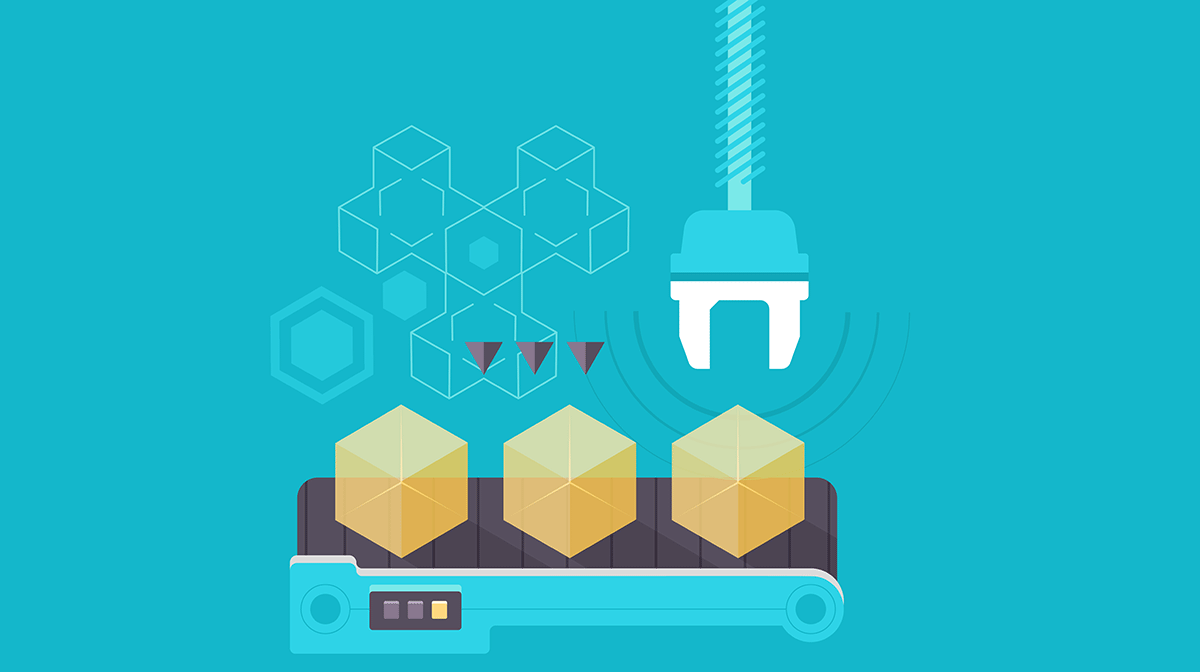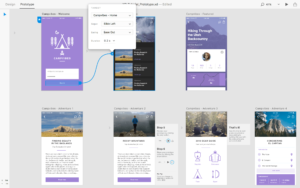Three Elements of a Successful Product Launch Strategy
Key Takeaways
- A successful product launch strategy requires thorough planning and encompasses three key elements: distribution, promotion, and support.
- Distribution involves understanding your customers’ preferences, identifying cost-effective methods to reach them, and establishing suitable distribution channels. It also requires considering the needs of the end-user and the product itself.
- Promotion should begin before the product’s release and continue until the end of the launch period. This can be achieved through a well-designed website, engaging blog posts, effective use of social media, email marketing, and press coverage.
- A strong customer support system should be in place before the product launch. This includes deciding how to handle customer feedback, ensuring the necessary technology is in place, automating tasks to solve common issues, and creating a crisis playbook.

It turns out the Boy Scouts had it right all along. Sufficient preparation is what separates successful product launches from the ones that crash into your neighbor’s backyard.
If you want your product to leave orbit, you need a plan.
According to Bplans, companies that plan grow 30 percent quicker than those that don’t, while 71 percent of fast-growing companies have a plan in place.
But plans take time to make, and with so many new products launching every day, many entrepreneurs feel if they don’t act immediately, they’ll be left in the dust. Just visit the product curation platform Product Hunt to get an idea of how crowded the marketplace is. Since its inception in November 2013, the site has compiled an evergreen database of 15,000 products. That’s nearly 30 product launches per day on just one website.
Considering those numbers, it’s easy to see how someone might feel pressured to rush their product to market. But pressure is something that scuba divers think about, and you’re not a scuba diver.
Take the time to launch your product the right way. Start planning its release by addressing these three elements.
Distribution

Distribution – How you will deliver your product or feature to your intended market.
Too many startups put all their eggs into the marketing basket while neglecting distribution, but the two are equally important. You can create the greatest marketing campaign since “Buy The World A Coke,” but if you can’t get your product in front of your customers, you’ll be stuck dancing on that hill forever.
To create a strong distribution strategy, you need to accomplish the following:
Note: If you haven’t researched and analyzed your ideal customers yet, put this article in your Pocket, and read this post on developing customer profiles.
- Establish whether your customer is more likely to buy your product online or in a physical store.
- Identify the most cost-effective way of getting your product in front of your customers without sacrificing quality.
- Establish your distribution channels. Will they be direct or indirect? Both? An example of a direct distribution channel is selling something you made through Etsy. An example of an indirect distribution channel is selling your products through an intermediary, such as a wholesaler or retailer.
- Take into account the needs of the end-user. If you’re selling clothes, will they need dressing rooms? Does your product require a live demonstration? Is your product something someone would go out of their way to locate, or is it more of an impulse buy?
- Take into account the the needs of the product. Is it perishable? Is it overly large? Is it extremely fragile? Does it require a specific display setup?
Answering these questions will make planning your distribution strategy much simpler.
For example, the meal subscription service Plated needed to create a distribution strategy that would quickly and safely get pre-packaged ingredients into the hands of its customers. They decided to sell their product online, and use an indirect distribution channel where the food travels from the farmer to the fulfillment center to the customer. To ensure speedy deliveries, Plated maintains multiple fulfillment centers across the country. Knowing how perishable their products are, the company designed an innovative packaging system that keeps its contents cold for up to 24 hours.
Promotion

Promotion – What you will tell your intended market and how you will tell them.
When planning a product launch, it is vital that your promotion strategy begins before the product is released and continues until the end of the product launch period.
The purpose of the pre-distribution promotion is to drum up interest in the product and have buyers lined up when distribution begins. Depending on the product, promotion may start a month, six months or even a year before launch.
Promotion Strategies
Website
Your website is the face of your business, so make sure it’s a face people wouldn’t mind looking at for a while. Ensure it’s SEO friendly, smartly designed and well organized.
Try to finalize all the website copy at least six weeks prior to the product launch. Make sure that all of your web pages are complete at least two weeks prior. Begin to tantalize users with images and videos of your product two weeks prior, and continue posting content until launch.
Blog
A blog is an easy and effective way to reach potential customers and keep them interested. Use your blog to update people on the progress of your product, any press you may have received and any big happenings or announcements related to your business. Always include “Coming soon” posts and sneak peeks to get people talking.
Social Media
Leveraging social media platforms such as Twitter and Facebook is another way to keep everybody informed about the latest product news. Similar to your blog, generate buzz with sneak peeks and “Coming soon” posts. Focus on making your social media messaging shareable so it reaches as many potential customers as possible.
Email Marketing
If you already have a user base, email marketing is a great way to get them excited about your product launch. Like blog posts and social media messaging, you can use emails to share your latest product news. You can also send people links to your blog posts, your website or any other relevant online content. Don’t forget to send an email on your release day! And make sure it includes an appropriate number of exclamation points. Also, here’s a good product launch sequence to follow by Ramit Sethi.
Press
Whether it’s mining your existing network or cold emailing bloggers, do everything you can to gain press coverage. Six weeks prior to launch, begin letting the press know about your product. Two weeks prior, start pitching them your story. When pitching, be sure to highlight compelling product features and unique selling points. Make it easy for someone to write an article about your product or tweet about its features. Don’t make them work for a news angle. Give it to them.
Support

Before you launch your product, you need to have a customer support system in place. Who knows, you might need it on day one.
A strong support system is also necessary for long-term success. Things are going to go wrong, and when they do, you need to be ready and able to fix them. Otherwise your customer experience will suffer, and when that suffers, so does everything else. Did you know it takes 12 positive customer experiences to make up for one unresolved negative one? Yikes.
Here are some tips on setting up a strong customer support system.
- Decide how to handle customer feedback. Will you incorporate it into your business strategy? Will you respond to feedback?
- Ensure you have the necessary technology for any scenario. For example, does your website have enough bandwidth to handle additional traffic? How about your telephone system?
- Automate tasks to help solve repetitive problems. For example, you can publish a FAQ, or set up canned replies to common issues.
- Create a crisis playbook that establishes the protocol for any conceivable disaster such as getting sued, bad press, or security breaches. Make sure this playbook is available to all personnel at a moment’s notice.
- For a customer support horror story, check out Groove HQ’s tell-all.
A Note on Timing
- Don’t launch on major holidays.
- If you already have a good number of beta users, Mondays and Tuesdays are optimal days to go live.
- If you’re dependent on a third party to facilitate your launch, make sure you’re launching on a day that suits their schedule
- If your product has competitors, find out when they’re launching. Do you want to go head to head? Do you want to wait until the market becomes familiar with the competing product before introducing your own? Remember, don’t rush to beat your competitors to market if you’re not truly ready.
Frequently Asked Questions about Product Launch Strategy
What are the key elements of a successful product launch strategy?
A successful product launch strategy involves several key elements. First, it’s crucial to conduct thorough market research to understand your target audience, their needs, and how your product can meet those needs. Second, you need to develop a unique value proposition that sets your product apart from competitors. Third, it’s important to create a comprehensive marketing plan that includes both pre-launch and post-launch activities. This could involve social media marketing, email marketing, content marketing, and more. Lastly, you need to have a clear plan for measuring the success of your product launch, including key performance indicators (KPIs) and metrics.
How can I ensure my product launch is successful?
Ensuring a successful product launch involves careful planning and execution. Start by setting clear, measurable goals for your launch. This could be a certain number of sales, new customers, or website traffic. Then, develop a detailed launch plan that outlines all the steps you’ll take to achieve these goals. This should include a timeline, budget, marketing activities, and more. It’s also important to continually monitor and adjust your plan based on feedback and results.
What are some common mistakes to avoid during a product launch?
Some common mistakes to avoid during a product launch include not conducting enough market research, not setting clear goals, not having a detailed launch plan, and not measuring results. It’s also a mistake to ignore feedback from customers or not adjust your plan based on this feedback. Additionally, many businesses fail to adequately promote their product before and after the launch, which can lead to low awareness and sales.
How can I promote my product before and after the launch?
There are many ways to promote your product before and after the launch. Before the launch, you can build anticipation and awareness through social media teasers, email newsletters, blog posts, and more. You can also offer pre-orders or early access to create excitement. After the launch, you can continue to promote your product through ongoing marketing activities, such as social media posts, email marketing, content marketing, and more. It’s also beneficial to gather and share customer testimonials and reviews.
How can I measure the success of my product launch?
Measuring the success of your product launch involves tracking key performance indicators (KPIs) and metrics. This could include sales, new customers, website traffic, social media engagement, email open rates, and more. It’s important to set clear, measurable goals before your launch and then track these metrics to see if you’re achieving your goals. You should also gather feedback from customers to understand their experience with your product and make improvements as needed.
What role does market research play in a product launch?
Market research plays a crucial role in a product launch. It helps you understand your target audience, their needs, and how your product can meet those needs. It also helps you identify your competitors and understand their strengths and weaknesses. This information can inform your product development, marketing strategy, pricing, and more. Without thorough market research, you risk launching a product that doesn’t meet market needs or stands out from competitors.
How can I differentiate my product from competitors?
Differentiating your product from competitors involves developing a unique value proposition. This is a statement that clearly communicates the unique benefits your product offers, why it’s different from competitors, and why customers should choose it. This could be based on features, price, quality, customer service, or other factors. It’s important to communicate this value proposition in all your marketing materials and activities.
What is a pre-launch marketing strategy and why is it important?
A pre-launch marketing strategy involves promoting your product before it’s officially launched. This can build anticipation and awareness, generate early sales, and gather feedback to make improvements before the full launch. It can involve social media teasers, email newsletters, pre-orders, early access, and more. Without a pre-launch marketing strategy, you risk launching your product to a market that’s unaware of it or uninterested in it.
How can I use social media to promote my product launch?
Social media is a powerful tool for promoting a product launch. You can use it to build anticipation and awareness, engage with your audience, gather feedback, and drive traffic to your website. This could involve posting teasers, behind-the-scenes content, countdowns, giveaways, and more. You can also use paid social media advertising to reach a larger audience. It’s important to choose the social media platforms that your target audience uses most and tailor your content to each platform.
What is a post-launch marketing strategy and why is it important?
A post-launch marketing strategy involves promoting your product after it’s officially launched. This can drive ongoing sales, engage with customers, gather feedback, and build brand loyalty. It can involve social media posts, email marketing, content marketing, customer testimonials, and more. Without a post-launch marketing strategy, you risk losing momentum after your launch and failing to achieve your long-term sales goals.
Josh Kraus is a Chicago-born, Denver-based writer and mediocre autobiographist with an interest in art, entrepreneurship, and emerging industries. When he's not writing, he attends to his t-shirt business, Bird Fur. Find him at joshkra.us and birdfurtees.com.

Published in
·Design·Design & UX·HTML & CSS·Photoshop·Prototypes & Mockups·Review·Sketch·Software·Technology·UI Design·UX·Web·March 11, 2019



